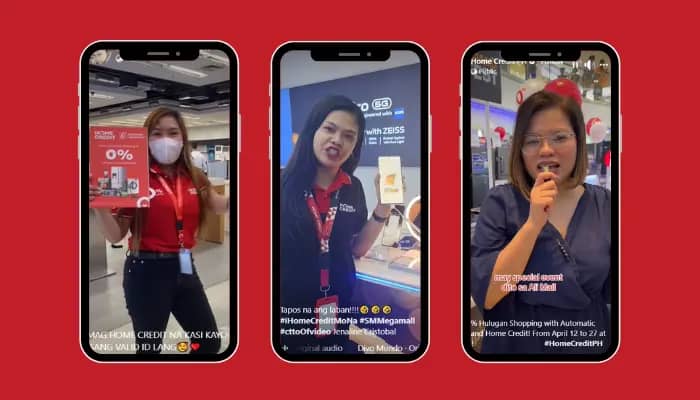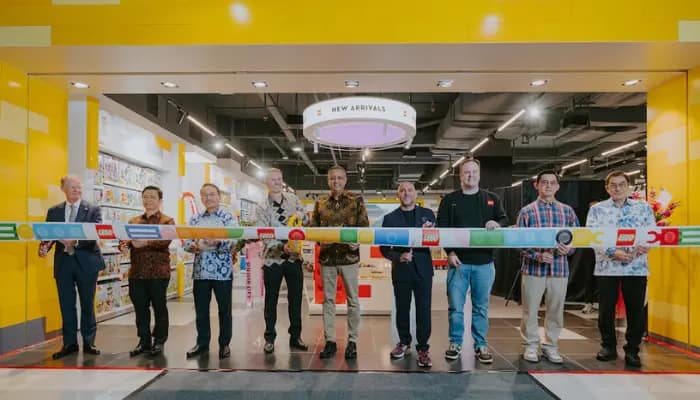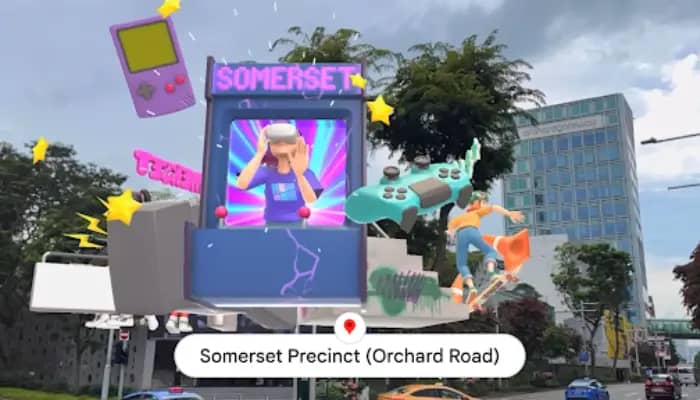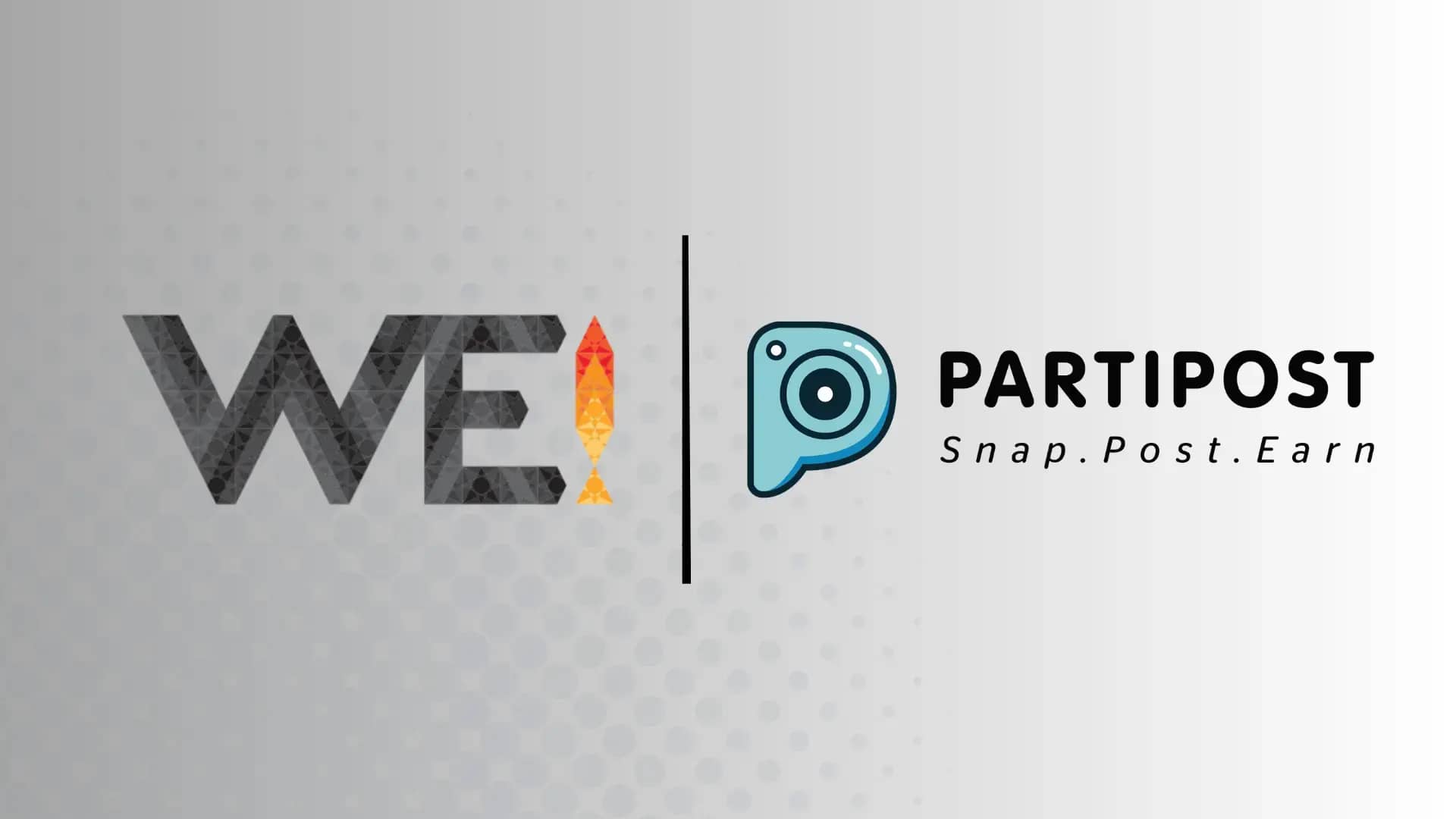Singapore – Interpublic group agency Golin has announced the appointment of Rafidah Rashid to the newly created role of group managing director across its Singapore operations.
In her new role, Rashid will be working across Golin’s agency brands, providing centralised leadership and strategic direction.
Prior to her appointment, Rashid has a proven track record of success at Interpublic Group brands, as she commenced her public relations career in the corporate and financial sector before instigating her path at DeVries Global Singapore, which she has led since 2017.
Most recently, Rashid was also appointed co-lead of the agencies’ Asia Pacific Diversity, Equity & Inclusion Council.
Speaking on her appointment, Rashid said, “As a leader, my mission is to champion industry-first innovations for brands, while empowering our people to reach their full potential. I am excited to lead our talented teams to fulfilling career growth, fostering client success and even greater industry excellence.”
Meanwhile, Darren Burns, president at Golin Asia Pacific, commented, “I’m so happy to appoint Fidah to this role,” said Burns. “Her unmatched energy for innovation, ability to build a vibrant culture, and her unique blend of experience, make her perfect for this role. Under her leadership, we are evolving a new era that builds off our sustained success in Singapore.”
Tag: Southeast Asia
Singapore – Southeast Asia has once again emerged as the world’s leading Muslim tourist destination, with Indonesia and Malaysia tied for the top spot among 145 global destinations. This is according to the latest edition of the Mastercard-CrescentRating Global Muslim Travel Index (GMTI).
The report noted that Indonesia and Malaysia both ranked in the list of leading destinations by the Non-Organization of Islamic Cooperation (OIC), as well as scoring favourably on ease of entry and quality of tourism infrastructure for both Muslim and non-Muslim travellers.
It is also worth noting that Singapore has consistently led among OIC destinations for the ninth consecutive year, underscoring its unwavering dedication to cater to Muslim travelers by widespread availability of Halal food, prayer facilities, suitable airport amenities, and Muslim-friendly accommodation.
Moreover, Thailand maintained its position in the top five non-OIC destinations, owing to efforts towards promoting Halal tourism like increasing Halal food availability, integration of Muslim-friendly amenities at tourist spots, and enhanced accommodation and dining options for Muslim travelers.
In addition, the Philippines recorded an increase in its score on communications compared to 2023. Among non-OIC destinations, the Philippines has steadily increased its appeal to Muslim tourists by strategically developing their Halal Tourism portfolio, enhancing halal accreditation of hotels and restaurants, and conducting Halal awareness orientations.
According to the report, the Muslim travel market is set for a significant uptick this year, with global international arrivals potentially reaching up to 168 million, exceeding pre-pandemic levels by as much as 5%.
This growth in volume highlights the rising prominence of the segment, driven by demographic and economic expansion, cultural and Halal tourism development, and technological advancements that enable more personalized travel experiences for Muslim travelers, such as apps that locate Halal food outlets, Qibla directions, and prayer timings. The impact of artificial intelligence is also helping further customize travel experiences to simplify travel logistics while adhering to faith traditions.
Safdar Khan, division president of Southeast Asia at Mastercard, said, “According to the latest report from the Mastercard Economics Institute (MEI), travellers from and to Southeast Asia are becoming increasingly focused on getting the best value from their trips to ensure the most unforgettable experiences, a shift echoed in the rapidly growing global Halal tourism industry. At the same time, technology is helping this demographic to travel in ways that meet their unique needs, from AI-powered hyper-personalized experiences to Mastercard’s own enablement of easy and secure cross-border payments.”
He added, “Together this heralds a new level of convenience for Muslim travellers and unlocks a new era of growth and profitability for travel operators. Mastercard’s long-running collaboration with CrescentRating is both a testament to the strength of the partnership and the ongoing importance of understanding and serving Muslim travellers.”
Meanwhile, Fazal Bahardeen, founder and CEO at CrescentRating, commented, “It is encouraging to see that the travel sectors in Indonesia, Malaysia, and Singapore not only maintained their rankings in this year’s GMTI, but also improved their individual scores. This reflects a broader trend of increased consideration for Muslim travellers, with average scores across the Index rising by 10%.”
He added, “It is also positive to see the Philippines continue to improve its score, which demonstrates the unwavering commitment of the Department of Tourism to bolstering Muslim-friendly tourism and advancing the destination’s appeal. As Muslim travel continues to gain momentum, the GMTI 2024 report provides invaluable insights for stakeholders across the travel and tourism sector to leverage the growing Muslim travel market.”
Singapore – Grab and OpenAI has announced a partnership, as both companies will design and deliver enhanced experiences for Grab users, partners and employees using state-of-the-art AI capabilities. This marks the first time a partnership like this has happened in Southeast Asia.
This partnership uniquely combines the development of AI tools for Grab users and partners with an initial pilot deployment of ChatGPT Enterprise for Grab employees. Moreover, Grab will access OpenAI’s technical and strategic expertise to partner on solutions tailored to the specific needs of users in Southeast Asia.
In terms of accessibility, Grab will leverage the use of state-of-the-art text and voice capabilities to make Grab’s services more accessible to all users, particularly the visually impaired or elderly who may otherwise find it challenging to navigate the on-screen app interface.
Moreover, Grab will explore using AI technology to build customer support chatbots that can better understand user problems and help resolve them faster.
Lastly, Grab will seek to leverage OpenAI’s vision capabilities to enhance its map-making efforts through greater automation and higher-quality data extraction from visual images. This means GrabMaps can be updated even faster, delivering a better experience to consumers and driver-partners.
Philipp Kandal, chief product officer at Grab said, “We’ve been a pioneer of AI adoption in the region, and believe that generative AI has a lot of potential to further transform the way we solve problems for our partners and users. We’re excited to work with OpenAI as a partner to help accelerate the exploration and use of this technology within Grab. Our goal with any new technology has always been to use it to solve real problems, at scale. Equipped with the latest tools, we look forward to building novel and delightful experiences for our customers while improving the way that every Grabber works.”
In addition to developing advanced AI solutions for its users and partners, Grab also intends to deploy ChatGPT Enterprise among select employees through an initial pilot, complementing existing efforts to drive wider use of AI tools across its employee base to boost productivity.
Meanwhile, Brad Lightcap, chief operating officer at OpenAI commented, “We’re excited to work with Grab and together explore how advanced AI can benefit Grab users, partners, and employees across Southeast Asia.”
This partnership follows a slew of partnerships OpenAI had including with the Financial Times, Reddit, and News Corp.
Singapore – Global technology company Epson has unveiled its revitalised brand message, ‘Engineered for Good’ in Southeast Asia. This pivotal shift underscores Epson’s commitment to marry innovation with purpose by co-creating cutting-edge technology solutions that contribute towards a sustainable future.
In an era where brands are distinguished by their values and aspirations, Epson redefines its identity to champion sustainability and meaningful innovation. The shift from its former brand message ‘It’s In the Details’ heralds a new purpose for Epson to go beyond product excellence and leverage on technology as a way to enrich communities. Epson’s corporate philosophy of ‘sho-sho-sei’ – or, ‘efficient, compact, and precise’ in Japanese – also aligns with this new brand message.
This brand shift also builds on Epson’s momentum towards its Environmental Vision 2050, which stipulates a goal to become carbon-negative and underground resource-free by 2050. At the end of 2023, Epson Southeast Asia adopted 100% renewable energy at all major sites and factories worldwide.
Tan May Lin, regional director of brand and communications at Epson Southeast Asia, said, “The actions of individuals and businesses, no matter how small, will play an important part in helping Southeast Asia achieve a sustainable future. Epson recognises that sustainability is a foundational element of responsible business practices. Hence, it is important that we communicate and advocate the use of Epson’s eco-efficient technology which helps reduce energy consumption, enhance productivity, and minimise the overall environmental impact of every Epson product.”
She added, “Our ‘Engineered for Good’ brand campaign reflects Epson’s unique philosophy of delivering efficient, compact and precise innovations. By further embracing innovation, we aim to combat global environmental challenges and societal issues, to enrich people’s lives and contribute to a better world.”
In the industry’s continued quest to find new channels to deliver effective campaigns to consumers, retail media networks (RMNs) have proven to be able to cut through the noise and able to stand out to consumers and deliver results. This is especially evident with the continued popularity of RMNs for marketers in Southeast Asia, with the latest report from GrabAds and Kantar noting that advertising spend on RMNs in the region is forecast to grow US$4.b by 2030.
The report also highlighted the importance of superapps in boosting RMN ad spend amongst SEA marketers, stating that superapp RMNs are well-positioned to serve the consumer needs with their O2O full-funnel ecosystem powered by first-party data.
To better understand how RMNs became a popular advertising platform for marketers in the region–and how brands and advertisers should approach them–MARKETECH APAC recently spoke exclusively to Ken Mandel, regional managing director and head of GrabAds and brand insights at Grab to learn more about the benefits of RMNs for advertisers and what case studies should the industry note in terms of RMN application.
Understanding regional factors that amplified RMNs
For Mandel, while retail media networks (RMNs) development differ from one region to another, he noted that Southeast Asia’s fast-growing digital economy and increasingly tech-savvy population primed for speed and convenience have made the region a fertile ground for the rapid growth of retail media networks (RMNs).
This is then highlighted by their recent study alongside Kantar that noted the total advertising (ad) spend on RMNs in Southeast Asia is projected to grow by 8% year-on-year in 2024, with year-on-year growth forecasted to be higher or consistent with global growth figures till 2030.
“Such market nuances are shaped by consumer preferences and behaviour. For instance, our study shows that 2 out of 3 Southeast Asians surveyed prioritise having products and services on-demand. This suggests that consumers in the region demand seamless, convenient experiences that get desired products into their hands quickly,” he stated.
He also noted how superapps much like Grab have also emerged as an integral aspect of consumers’ daily lives, and are able to seamlessly bridge the entire retail experience from discovery to purchase and delivery.
“One in two Southeast Asians utilises superapps for their everyday online and offline activities, according to our study with Kantar. The integrated RMN ecosystem with its multiple services allows RMNs to collect first-party transaction data across the platform beyond simply purchasing habits, providing holistic user understanding for brands to build more effective targeting parameters,” Mandel added.
How RMNs are delivering effective advertising campaigns
To begin with, Mandel notes that RMNs allow brands and advertisers to benefit from a full-funnel sales flywheel that achieves both top and bottom-funnel objectives. For him, they are powered by first-party transaction data and solution-oriented ads, allowing advertisers to serve highly relevant ads to customers that meet their needs and behaviour across their buying journey.
“Essentially, RMN ads reach consumers who are already in a buying or discovery mindset and provide a suitable product solution for the right occasion. As a result, consumers are more receptive towards RMN ads, as they are perceived as less intrusive and more trustworthy,” he explained.
It is also worth noting that in the same study they conducted alongside Kantar, it noted that RMNs ranked first in online media channel equity, which measures consumers’ receptivity to advertising messages across different online media channels.
“RMNs are able to deliver strong performance marketing results, thanks to three key ingredients – first-party data, a sizable audience and the ability to close the loop between consumer intent and purchase. This means that advertisers can attribute sales to their media dollars,” he also stated.
Mandel also highlighted how superapp RMNs in particular can reach and measure both offline and online behaviours and transactions, thanks to their unique online-to-offline ecosystems.
For instance, on Grab’s case, they were able to work with juice brand Sunquick to serve ad banners offering a free sample of Sunquick’s new Mango cordial. Through this campaign, clicking into the ads would take shoppers to GrabMart where everyone who bought an item would have a bottle of Sunquick Mango cordial added to their basket. Moreover, they have also worked with DBS when they curated an omnichannel campaign with offline fleet ads and in-transit online ads on the Grab app.
“Superapp RMNs are not just pure performance marketing channels. According to the latest Grab Food and Delivery Trends 2023 report, 66% of our consumers come to Grab without a specific store in mind, and 91% of them have used the Grab app to discover new restaurants or stores. This means that consumers also leverage RMNs for discovery, which opens up opportunities for upper-funnel brand building,” he said.
Understanding how superapp RMNs are supporting contextual advertising
Speaking of superapps, Mandel notes that the integrated RMN ecosystem with its multiple services on superapps allows RMNs to collect first-party transaction data across the platform beyond simply purchasing habits, providing holistic user understanding for brands to build more effective targeting parameters.
Moreover, it is also worth mentioning that the superapp’s integrated payment systems also make it possible to track offline transactions if users pay using the platform, allowing brands to better attribute sales to advertising dollars.
“Superapp RMNs like Grab bridge the online to offline with their comprehensive ecosystem. GrabAds offers advertisers offline assets such as product sampling, in-car branding or car wraps to deliver an integrated campaign across multiple channels. This is key to designing more effective ad campaigns as our report with Kantar reveals that using both online and offline channels improves positive ad receptivity by 5%,” he explained.
He also added how superapps are able to provide first-party transaction data, which reflects the true commercial intention of a consumer. For them, this helps brands and advertisers identify consumer personas and audience segments based on actual behaviour and transactions.
In their own case, they have identified so-called ‘Chief Family Officers; (CFOs) as a specific, high-value segment of their users on the Grab platform based on indicative purchasing behaviour. According to Mandel, their behaviour within their app offers many opportunities for advertisers to do so, since they spend 2.1 times more monthly and use delivery services 1.9 times more frequently than the average Grab user.
“Advertisers looking to reach CFOs can consider promoting family-related products catering to their needs. Ultimately, high-resolution user profiling with superapp RMNs allows brands to create more targeted campaigns that resonate with specific user segments,” he said.
Advice for advertisers tapping RMNs for the first time
“if you’re not in the game, you can’t play”: this was the number one advice Mandel offered to brands if they want to explore RMNs for the first time. For him, whilst RMNs provide a lucrative opportunity for advertisers to expand their reach, one should also know their perfect RMN match.
“It is also important to partner with the right RMN players. While there are diverse retail media platforms in Southeast Asia, advertisers should look out for three key ingredients when deciding which platform to work with: first-party data, a sizable audience and the ability to ‘close the loop’,” he said.
Mandel also added, “Most importantly, brands should not focus only on bottom-funnel opportunities. RMNs are full-funnel solutions, and advertisers should consider how they can utilise the capabilities of RMNs across the funnel with the consumer in the middle.”
With RMNs continuing to be a promising advertising platform for marketers in Southeast Asia, it’s also important to understand that tapping into this new type of platform requires both an understanding of how your brand would be relevant to users, especially those who are using superapps on a regular basis. With consumer behaviour being more manifested on online platforms, RMNs–whether on social media or on e-commerce platforms–is a great opportunity for advertisers to ride on whilst understanding better consumers on a contextual basis.
Manila, Philippines – With the rise of short-form content within the marketing industry through Tiktok and other social media platforms, memes have integrated itself as the emerging marketing strategy for brands and companies to garner interest towards their campaigns.
One such company who jumped in on employing this strategy constantly is financial service company Home Credit in the Philippines, as they are also known for their recent viral posts on social media sites through their sales agents and marketing specialists, with their ‘Transition Trend’ garnering mass attention as a recurring trending meme in the country.
With this in mind, MARKETECH APAC spoke exclusively with Chris Martin Alarcon, head of content and community management at Home Credit Philippines, to find out more about the usage and impact of these types of content to both audiences and brands alike.
Memes in motion
According to Alarcon, this type of campaign shows to a brand’s customers and the broader audience that the brand is not afraid to have fun and let their employees be able to show their authentic selves.
“Usually when it comes to financial services, we have this notion that the industry is uptight and serious—it shouldn’t be the case. At Home Credit Philippines, we not only take pride in helping millions of Filipinos with our financial solutions, but we also take pride in showing our entertaining, exciting, and approachable side,” he added.
These types of campaigns also help brands and companies turn the social media algorithm towards their favour. Riding on trends, using popular music, and adding the latest filters not only show your audience that you’re a fun and dynamic company, but also, from what Home Credit PH has noticed, gives a boost in organic numbers as social media platforms show your content to more Filipinos’ news feeds.
Home Credit PH’s Team has understood this and has been riding on trend after trend, and the team has now created a hit viral campaign with the ‘Home Credit Transition Trend’.
Rolling out genuine content
When asked about how sales associates and agents collaborate with the marketing team to release these types of content for Home Credit Philippines, Alarcon mentioned that this collaboration to put out content is built on letting employees simply create and be themselves.
The Home Credit PH Team decided to just let their sales associates be their authentic and fun selves to promote Home Credit’s financial solutions to their circle of followers and encourage their audience to buy the latest gadgets or appliances.
“Of course, we still need to think about brand reputation, so the team made sure to remind the employees to be factual and respectful—they still represent the Home Credit brand. We also remind them to create content that does not encourage violence,” Alarcon commented.
The impact of memes and trend-jacking
The purpose of memes and trend jacking in marketing content is generally for brand awareness and engagement, as they connect the brand closer to the audience.
With the initial viral ‘transition’ content created by the Home Credit PH Team, followed by the fun posts by their employees, Alarcon stated that the ‘Transitions Trend’ has generated over 40 million organic views.
He also mentioned how it was featured in national news, and influential, usually comedy, KOLs, started riding on the Home Credit conversation, giving them additional organic mileage.
Historically, sales associates have experienced product inquiries and even product purchases when they do content in social media. While we have yet to see the sales effect of the campaign since it’s only been a month, we’re optimistic about the sales the campaign will help generate.
Driving effectivity whilst maintaining brand identity
When asked about how Home Credit Philippines keeps their brand identity intact amidst these trend-reliant campaigns, Alarcon said that there are some trends that their brand can’t ride on for the sake of it, because it wouldn’t look very authentic.
“We still have to connect our audience to the brand one way or another. That’s why knowing what your brand offers at the core is important because it will be your anchor to whatever content you will do,” he mentioned.
As a company, Alarcon shared that Home Credit Philippines’ philosophy in creating these types of content hinges on having a strong awareness of what’s trending online, their agility to ride on trends, possessing internal content creators such as their own sales associates to help spread the brand’s message effectively, and executing authentic and localised campaigns to maximise relatability and genuineness in delivering the brand message.
The future of meme-centric campaigns
For what’s next to come in the realm of trendy content campaigns around memes, Alarcon expressed that meme campaigns are here to stay to build awareness, engagement, and relatability and to build brand love.
Memes and funny videos are some of the most consumed content in the Philippines today and what can take meme and humorous campaigns to the next level is user-generated content by communities for that sense of groundedness and authenticity that feels natural and relatable.
“Particularly for Home Credit Philippines, we are in a unique position where we have gathered over 10,000 employees who can create content for us. A good lesson marketers can learn is don’t underestimate the ability of your own employees to create great content—because anyone can create viral content these days,” he concluded.
Jakarta, Indonesia – The Lego Group has officially opened its largest store in Southeast Asia, with its latest outlet located at the Senayan City shopping mall in Jakarta, Indonesia.
This opening is part of the LEGO Group’s ongoing efforts to expand its presence in Indonesia and strengthen its domestic and travel retail presence in Asia.
The 365 square metre store in Senayan City offers immersive Lego experiences, including Southeast Asia’s first “Lego Minifigure Factory” where shoppers can customise Lego minifigures.
It also features three-dimensional Lego brick models of popular Indonesian icons such as the National Monument and the Jakarta bus, as well as a 3m-tall mosaic wall of the historical Selamat Datang Monument made with 21,562 Lego bricks.
Alongside this, the LEGO Group, together with the LEGO Foundation, has pledged to donate US$1 million over three years to support initiatives designed to provide children and caregivers greater access to “Learning Through Play”.
This store is one of six set to open this year, bringing the total number of Lego stores in Indonesia to 26 across nine cities. Additionally, Lego products are available at 300 other retailers, including toy stores, department stores and official online shops.
Talking about the opening, Claus Kristensen, senior vice president at the LEGO Group APAC, said, “Today marks an exciting milestone in our journey to bring joy and creativity to children across Indonesia. We see potential in this dynamic, growing market and are looking forward to strengthening our presence, reaching more children and inspiring the builders of tomorrow.”
“We have been present in Indonesia for over ten years through distribution and manufacturing partners and appreciate the strong support shown for our brand and business. We look forward to continuing to collaborate with local partners as we further build our presence,” he added.
Notably, this opening also follows LEGO’s recent appointment of two general managers to its Asia Pacific leadership team for business units of Singapore, Malaysia and Travel Retail (SMTR), and India & Emerging Asia (IEA).
Singapore – The Singapore Tourism Board (STB) and Google will be expanding on its partnership to create more augmented reality (AR) experiences, which will be directly available on Google Maps for the first time.
This partnership with Google builds upon the success of Merli’s Immersive Adventure – an innovative AR tour to six enchanting stops around Singapore through STB’s Visit Singapore Travel Guide app launched in January this year.
As part of this pilot, STB will continue to use Google’s ARCore and Geospatial Creator to develop new location-based AR experiences.
Unlike before when STB’s AR experiences were made available only on its travel app, these new AR experiences can soon be discovered and enjoyed entirely within the Google Maps mobile app, one of two cities in which these experiences will be available.
Moreover, STB has also onboarded over a dozen other tourism stakeholders in Singapore to join the pilot, who themselves will also develop location-based AR experiences to provide 30 places of interests with AR experiences, creating an immersive journey across key tourism precincts in Singapore.
With this expansion, the AR content will now be visible remotely via Street View on the Google Maps mobile app for a seamless and accessible experience regardless of location. Users near the landmarks can also discover the AR content on their mobile devices by scanning their surroundings using Lens in Maps, as it overlays the physical surroundings in the real world.
The full experience will be available on Google Maps later this Summer. STB plans to further grow the number of location-based AR experiences in Google Maps beyond 30, building on its goal of making Singapore the world’s first “AR City” in Google Maps.
Talking about this latest offering, Eric Lai, group product manager, AR, said, “We’re thrilled to unlock a new way for people to interact, engage and discover Singapore’s vibrant culture and history on Google Maps. Through location-based AR experiences, we’re making it more intuitive for over a billion users to discover this iconic city in a way like never before.”
Meanwhile, Simon Ang, director, The Collaboratory, Singapore Tourism Board, commented, “We are excited to extend our partnership with Google to bring even more immersive and innovative experiences to travellers through AR on Google Maps. This partnership underscores STB’s dedication to testing the use of frontier technologies which can revolutionise the visitor’s experience of tomorrow.”
“This pilot greatly benefits local businesses, who can leverage AR to tell different stories over the same spaces, and have their content discoverable and accessible on Google Maps. It also benefits travellers as it aids their discovery of new places of interest, and enriches them with a deeper understanding of Singapore’s rich history and culture through interactive storytelling,” he added.
Kuala Lumpur, Malaysia – Omnicom Media Group (OMG) agency PHD has won the OPPO media business in several Asian markets, specifically Malaysia, Indonesia, the Philippines, and Bangladesh – following a competitive pitch.
Effective April 1, PHD’s appointment covers OPPO’s online and offline media planning, as well as its strategy and thought leadership processes.
These duties will then be managed out of Malaysia, which is OPPO’s APAC hub, and includes working with the OPPO HQ team in China and other OMG offices to roll out various initiatives and strategies for global markets.
Talking about the appointment, David Soo, managing director, PHD Malaysia, said, “We are proud to have won the OPPO business and this marks a great opportunity for us to work on a leading global technology brand that mirrors PHD’s pursuit of innovation, excellence, and creating work that delights consumers. A crucial part of the win stemmed from the team’s thorough response to the brief as well as the chemistry internally and with the client teams at all levels.”
“Given the broad remit, the win is a huge step up for the team, elevating their exposure and further boosting PHD Malaysia’s quality and ability to take on similar roles in the future,” he added.
Meanwhile, Elly Huang, head of media at OPPO, commented, “We commend PHD Malaysia for their exceptional track record, expertise, and passion for innovation. We are excited to embark on this journey together and push the boundaries of what is possible in this dynamic industry.”
It is also worth noting that this appointment comes shortly after PHD won the OPPO media business in India.
Singapore – Digital marketing solutions provider WE! Interactive has partnered with influencer marketing platform Partipost to enhance social media strategies across Southeast Asia, with a particular focus on expanding their presence in Thailand and Indonesia.
This collaboration will leverage Partipost’s network to enrich WE! Interactive’s offerings, enabling superior content quality and broader audience engagement.
By leveraging the creative power of Partipost’s influencers, WE! Interactive will provide clients with a multi-dimensional social media strategy that adapts to new technologies and changing consumer behaviours, ensuring more engaging and effective campaigns.
Additionally, the partnership promises to offer innovative solutions tailored to the needs of modern brands and consumers, not only highlighting both companies’ commitment to innovation but also promoting sustainable and inclusive growth in the digital marketing realm.
Talking about the partnership, Matthew Lim, CEO of WE! Interactive, said, “Our collaboration with Partipost marks a transformative step for our social media strategies. This alliance not only broadens our toolkit with high-quality, diverse influencer content but also deepens our capability to craft compelling narratives that resonate with our target audiences in Southeast Asia.
Meanwhile, Jonathan Eg, CEO and founder of Partipost, commented, “At Partipost, we’re committed to continuous innovation in influencer marketing, with a strong focus on leveraging the power of user-generated content. Partnering with WE! Interactive allows us to create a powerful synergy that unlocks new possibilities for brands in Southeast Asia, offering them access to WE!’s strategic expertise combined with Partipost’s extensive network of authentic creators.










